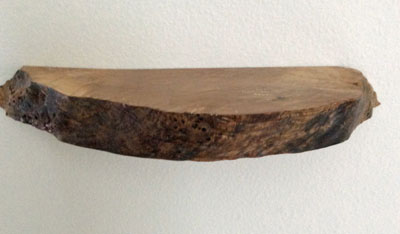(Click on any picture to see a larger version)
My woodworking initially started back in the day when woodshop was taught in school. When I was going to college I worked summers in various cabinet shops as a GOFER. You know, GO-FER this and GO-FER that as a shop assistant. Later, when I joined the Army, I discovered they had woodworking shops for the servicemen and I found myself spending my free time there. I think I would rate my skill level as good. My woodworking hobby continues to be something I enjoy and find relaxing. At one point I thought about opening my own woodshop to make furniture, cabinets, bookcases and other items on a full time basis. I found that trying to build clients and keeping to schedules for promised projects added too much stress. At that point it stopped being fun and relaxing so I abandoned that path. Though I am retired now, woodworking remains a hobby for me. I continue to buy exotic and interesting wood as I come across unique pieces and I seem to acquire more power and hand tools as I go. I've always said, "One can never have enough clamps!" That became a family joke. When asked what I wanted for birthdays and Christmas I would simply respond with excitement, "I could really use more clamps!" I still don't have enough!
About nine years ago my wife and I took a 2 week road trip down the coast of Washington, Oregon and northern California. We made an agreement before leaving on the trip that we would stop at quilt shops (my wife's passion) and woodshops. It was surprising how many there were and we even found one stop that was a husband and wife business that was part quilt shop and part woodshop! To this day, we agree that this was one of our best road trips we've ever taken. On our return route, we decided to head east through northern California on the Redwood Highway and then head north. As we got closer to Kerby, Oregon, I saw signs for burl wood. We ended up stopping along the way where I met Harvey Shinerock, the artist, craftsman and owner of
It's A Burl
. I mentioned to Harvey that I enjoyed woodworking as a hobby and he asked me, "Have you ever carved a bowl out of burl wood?" I said, "I have not tried that and I wouldn't know how to do that." He pulled out a tool catalog and circled all the tools I would need and then he explained how I could go about making one, if I was interested. I was interested and so I followed him out to his various covered wood sheds and we picked out several burl blanks to carve.
These burl blanks sat in my garage for over two years because when I bought the tools and got ready to carve, I felt a little edgy and intimidated about carving with what is basically a chainsaw blade on a grinder. I needed to get my head comfortable with the whole process start to finish. When I finally did, I was hooked. I give credit to Harvey Shinerock for motivating me and patiently explaining how to carve burl bowls. I make them as art pieces rather than for function. The interesting thing about making these bowls is that there is so much tension in the wood, you never know what the final shape will be because it morphs as the wood is carved and the tension in the wood changes. The other thing I love about making them is that I never know what beauty lies beneath the surface of the wood until it's uncovered during the carving. It never gets old for me. I like the idea of my being able to "pay it forward" and perhaps inspire another woodworker to try carving their first bowl.
Below are a couple of the bowls I carved and the sequence pictures of the tools and process I use for making my bowls: Attaching glue block to hold in the vice, the rough cut and then the final finished bowl. The second to last picture is my first maple bowl that started me off on making them. It's a little prickly to hold and the grain looks amazing, like little tight knots.
The other thing I love about making these bowls is that I never know what beauty lies beneath the surface of the wood until it's uncovered during the carving. It never gets old for me.

|
This is a maple floating shelf with live edge for
displaying art. It's one and three quarter inches thick.
|
If you have any questions you can email Marty at
WoodworksByMartinD@yahoo.com
.
Return to
Wood News
front page
|